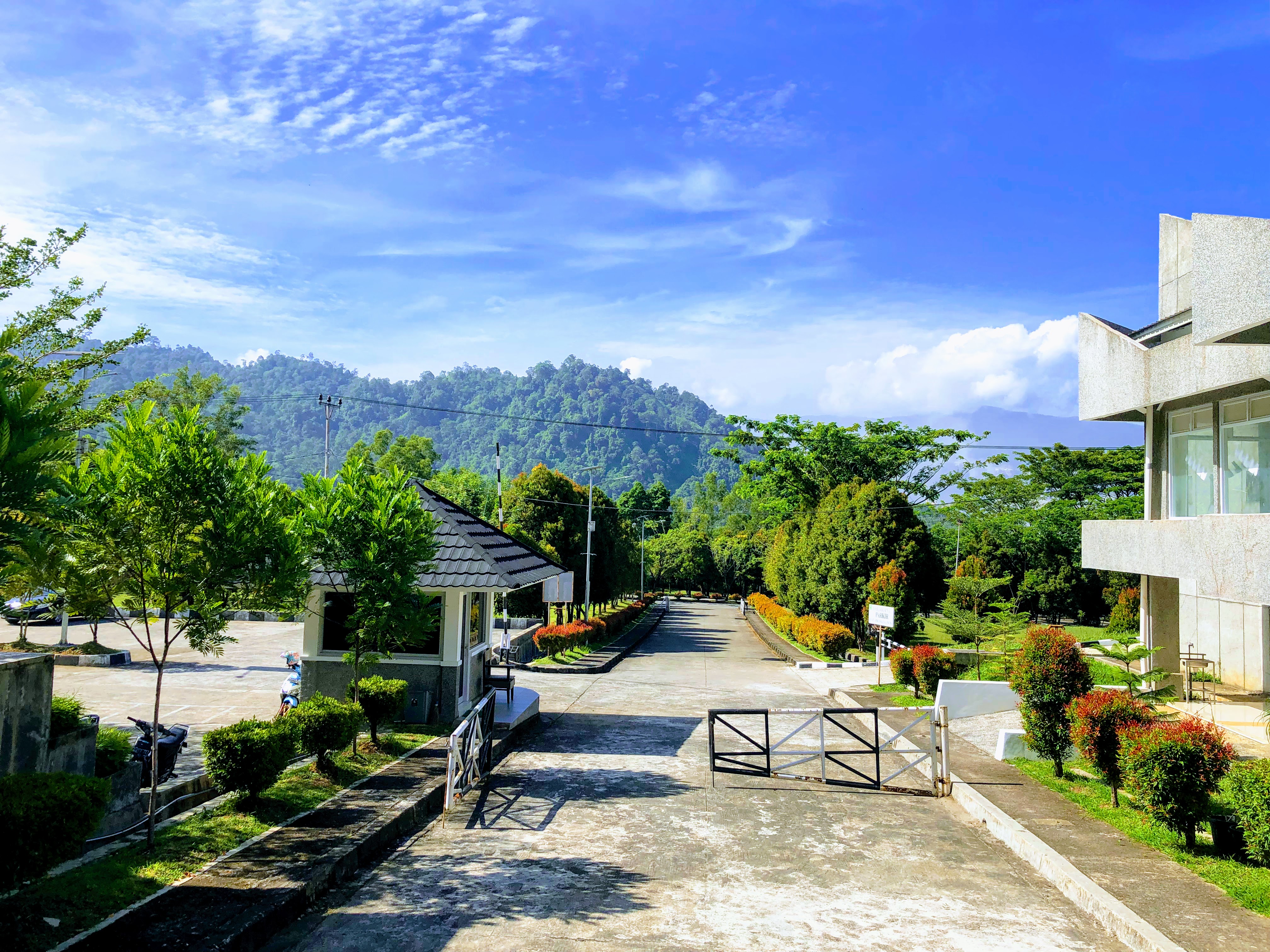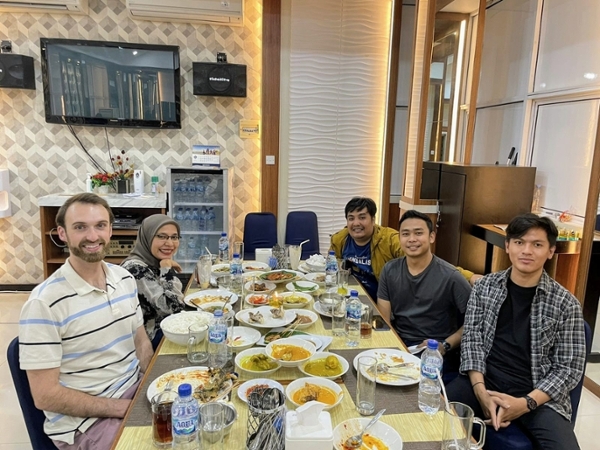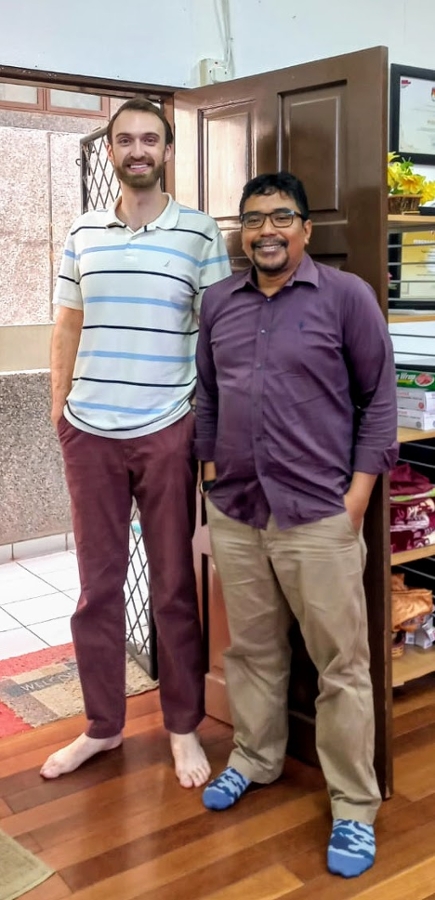I. Introductions, Constitution(s), & Padang
Hello, my name is Gray Whitsett, and I am a rising second year law student working this summer in Indonesia. The basics of my summer are outlined on my main page, so I am going to dive into a more substantive introduction about me, offer some background on the structure of Indonesian government, and discuss where I am living: the city of Padang, in the province of West Sumatra.
I came to law school to study election and political law, specifically the legal framework of election administration and the structure of the American electoral system. At the time of writing, the January 6 Select Committee has just concluded its first public hearing, less than a day after the arrest of a candidate for Michigan governor for his involvement in the attack that day. Indonesia is no stranger to such post-election behavior–in 2019, protests turned violent as the losing presidential candidate claimed “massive cheating and irregularities” and refused to concede to incumbent president Joko Widodo. The opposition campaign urged demonstrators to take to the streets, resulting in 8 people killed and over 600 injured as the capital city Jakarta turned into a temporary warzone. Rioters did not breach the Indonesian capitol; America’s stormed the House floor. To my patriotic shame, it feels more pressing than ever that Americans consider how to heal our democracy and strangely relevant to be in a country that has weathered colonial abuse, authoritarianism, and political reformation in under eight decades.
The 2024 election looms for both the United States and Indonesia, as voters in both countries will cast ballots for president, national legislators, and state and local officials. I will be in no position to alter the political climate in America, but I am grateful to be working with individuals in Indonesia who have dedicated their personal and professional lives to the hard work of demokrasi: the Center for Constitutional Studies (PUSaKO), housed in Andalas University’s Faculty of Law. I will explain more about the organization in future entries, but I’m not being hyperbolic when I say they’re something like the X-Men of Indonesian democracy, based out of a school on the side of a mountain, bringing their varied titles and talents together for a common purpose. What the Federalist Society has been for conservative jurisprudence in the United States, PUSaKO has been for good governance in Indonesia.
Most of what I write about in subsequent posts will detail their work and my experience with them, but I first need to do some table-setting on Indonesian government, and my friends and family will have my head if I don’t explain more about where I’m living and what I’m seeing.
The Indonesian Constitution(s) and Structure of Government
Indonesia has operated under four constitutions since its independence from Imperial Japan in 1945, an occupation that dislodged some 350 years of Dutch colonial rule under the guise of the Dutch East India Company. Under the leadership of Indonesia’s first president, Sukarno, and vice president, Mohammad Hatta, among many others, the 1945 Constitution was adopted during the ongoing attempt by the Dutch to regain control of the country through military and diplomatic interference. The four year conflict ended in 1949 with Dutch recognition of Indonesian independence in exchange for the adoption of a new constitution and a friendly trade relationship. Reconstituted, literally, as the Federal Republic of Indonesia, the second constitution devolved power away from the national government in a constitutional power play by the Netherlands to make it easier to pick off the various provinces that make up Indonesia and arrange local deals favorable to Dutch commercial and political interests. From an American perspective, imagine that following the War of 1812, the British could bypass Washington to negotiate directly with Virginia and Kentucky and avoid the political counterbalance of Massachusetts and New York in Congress. The second constitution was soon rejected by the Sukarno regime, and a short-lived interim constitution was instituted to make way for the reinstatement of the 1945 Constitution in 1959.
That brings us to three constitutions in fewer than fourteen years, with the 1945 Constitution bookending this period. The reinstated 1945 Constitution would remain unchanged through the collapse of the Sukarno regime in 1966, the rise of General Suharto and his autocratic “New Order” regime, and the 1997 Asian Financial Crisis that, among other things, drove Suharto from power in 1998. The ensuing four years ushered in massive political and social reform in Indonesia, generating amendments to the 1945 Constitution each year. The Amended 1945 Constitution is the current iteration of Indonesian constitutional history and has not been changed since the Fourth Amendment in 2002.
At risk of waxing poetic, this Era Reformasi was a remarkable political and social overhaul, a spirit of democratic development that PUSaKO seeks to advance and protect. Particularly relevant to William & Mary, the Third and Fourth Amendments resulted in a Constitutional Court with the exclusive power of judicial review. Its American parallel would be the Supreme Court, only it is limited to constitutional questions, which to a student of constitutional study isn’t much of a limit at all. The scope of the Four Amendments is immense, and I will discuss more later, but before moving on I need to outline the basic organs of Indonesian government provided for in the Amended 1945 Constitution.
Broadly speaking, the structure of Indonesian government is similar to the United States, with a president heading the executive branch, a bicameral legislature, and an independent judiciary populated by presidentially appointed and legislatively approved judges. The most powerful chamber of the Indonesian legislature, the People’s Representative Assembly/Dewan Perwakilan Rakyat (DPR), is similar to the House of Representatives and is comprised of 575 members, while the Regional Representative Assembly/Dewan Perwakilan Daerah (DPD) resembles the Senate, consisting of four senators from each of Indonesia’s provinces totaling 136. Interestingly, the total number of DPD senators cannot exceed one-third of the DPR (575/3 = 191), so if enough provinces were added to reach 191 and total DPR membership did not increase, the number of DPD members allocated to each province would decrease. This is, however, largely an academic exercise, as the DPD can only propose legislation on a limited set of issues, and it cannot prevent the DPR from enacting laws. Additionally, all powers of confirmation and ratification are possessed by the DPR. If the influence of the Senate and House of Representatives is split roughly 60/40 in the United States, the DPR and DPD is more like 90/10.
The DPR and DPD jointly form the People’s Consultative Assembly/Majelis Permusyawaratan Rakyat (MPR). As a matter of terminology, this is a bit like how Americans use the term “Congress,” but in Indonesia, references to the legislature usually use the term DPR. Although the MPR itself possesses certain constitutional powers that the DPR technically does not have, the MPR consists of the 575 DPR members plus the 136 DPD senators, resulting in numerical supremacy by the DPR. Unless noted otherwise, I will always use DPR to mean both the specific chamber and the national legislature as a whole, as Indonesian citizens and scholars do.
The national governmental structure is reflected in most of the 34 provinces/propinsi that make up Indonesia, with each having a governor and a unicameral legislature (a Regional People’s Representative Assembly/Dewan Perwakilan Rakyat Daerah [DPRD]). Further subunits, such as regencies/kabupaten and cities/kota, have additional leadership structures. Altogether, they can be fairly compared to the state, county, and municipality breakdown in the U.S. system, but with two critical differences: (1) provincial, regent, and city governments are set by national statute and (2) provinces do not maintain their own court systems like American states do.
This is far from comprehensive, and there are notable exceptions to be detailed in the future, but this is the basic field on which the game of demokrasi is played. The key takeaways are that most power resides in the national government, and most of that power is concentrated in one chamber of the legislature, the DPR. The Constitutional Court has the power to review the actions of the DPR, but this authority is still developing and contentious.
Padang, West Sumatra
I will wrap this up by discussing where I live currently, the coastal city of Padang in the province of West Sumatra/Sumatra Barat. Indonesia consists of somewhere between 16,500 and 17,500 islands, five of which dominate. From east to west, these major islands are: Papua, Sulawesi, Borneo, Java, and Sumatra. Sumatra is the largest in Indonesia (and sixth in the world), and is divided into ten provinces, of which West Sumatra is one. Facing the Indian Ocean and orbited by several outlying islands, the province is known for its beaches, surfing, and cuisine. Padang is the provincial capital, situated directly on the coast, and is something of a college town, boasting several universities, including Andalas University where PUSaKO is based.
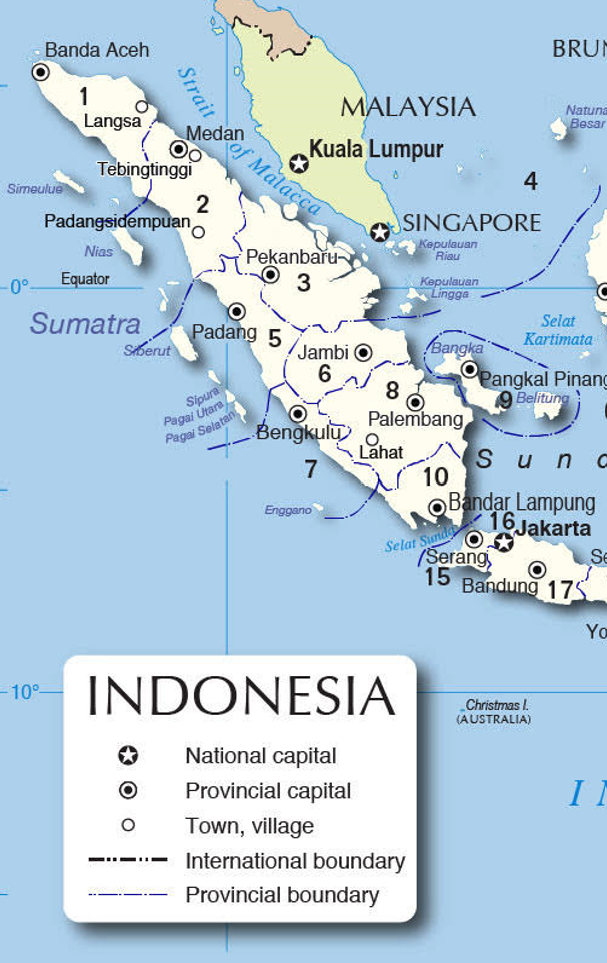
West Sumatra, and much of Sumatra as a whole, tends more conservative than other parts of Indonesia. It is overwhelmingly Muslim, and shares deep cultural roots with the Malay people that populate modern day Malaysia, Singapore, Brunei, and parts of Indonesia. However, West Sumatra has a distinct lineage within the Malay, as its current borders trace the former boundaries of the Pagaruyung Kingdom, the seat of the Minangkabau, or Minang, people. This history is enormously complex, and much is unknown about the Pagaruyung Kingdom, but from my experience and readings so far, the typical West Sumatran identifies as Muslim, Minang, Sumatran, and Indonesian, often in that order.
I live near the beach, proximate an impressive new mosque, Masjid Al-Hakim, and a busy urban core of restaurants, cafes, and businesses.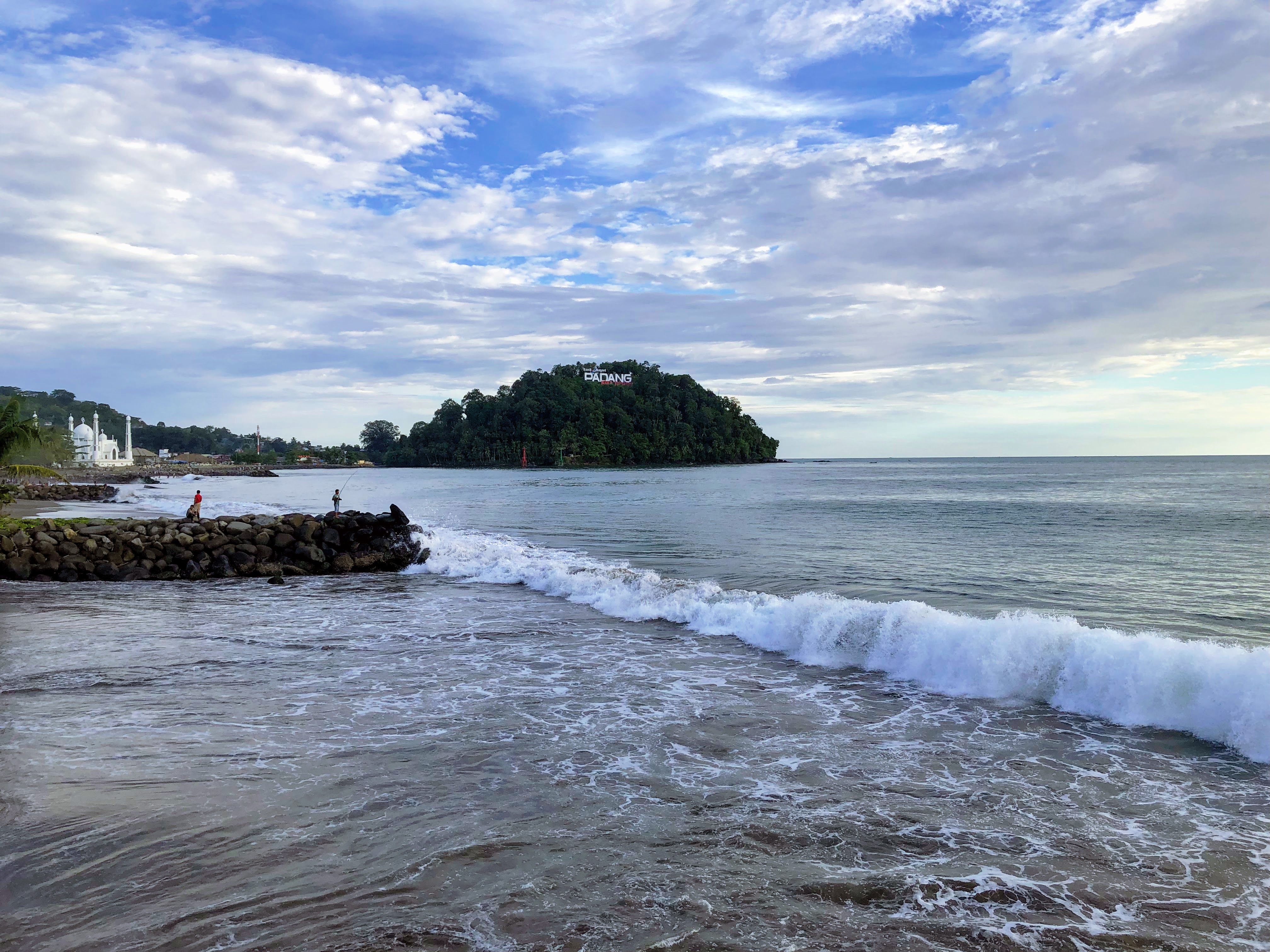
I work with a team of undergraduate and graduate researchers, guided by Drs. Edita Elda and Charles Simabura. Dr. Elda specializes in international criminal law, with a focus on gender-based human rights violations, and Dr. Simabura (who insists I called him Mr. Charles) focuses on election administration and anticorruption. The team of fellow students have been welcoming, helpful, and patient with me as I drink from a veritable firehose of new things.
In particular, I want to thank Haykal, who has been indispensable as a guide, resource, and, most importantly, a friend. Each day, I learn something new from him, and he has spent no fewer than fifteen hours debating American and Indonesian politics with me over coffee and tea. I would not want to be on the other end of a legal fight with him.
Finally, I have not mentioned Feri Amsari, the individual responsible for PUSaKO’s relationship with William & Mary and my internship. An L.L.M. student at W&M Law in 2007, Mr. Feri has maintained a relationship with the college and Professor Christie Warren, bringing a W&M law student to Padang and Jakarta for the past several years. Although I have spoken with him by Zoom, our one dinner in Jakarta was brief, so I am saving a fuller biography of Mr. Feri later in the summer, once I am working in Jakarta. If PUSaKO is the X-Men, Mr. Feri is surely Professor X (with a full head of hair).
Thank you for taking the time to read this. I know the middle portion can be dense, but I think it is important I set things up well since this is not a travel blog or a repository for pretty pictures, as pretty as this place is. If you noticed something I got wrong in this or future posts, please reach out to me at jgwhitsett@wm.edu. It was written over several days, battling technological headwinds, and while I think deeply on these topics, I am no expert.
See you next week, and if you haven’t already, register to vote.
